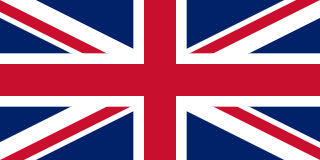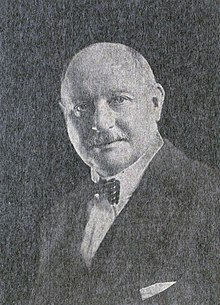These are lists of incumbents, including heads of states or of subnational entities.
A governor is an administrative leader and head of a polity or political region, ranking under the head of state and in some cases, such as governors-general, as the head of a state's official representative. Depending on the type of political region or polity, a governor may be either appointed or elected, and the governor's powers can vary significantly, depending on the public laws in place locally. The adjective pertaining to a governor is gubernatorial, from the Latin root gubernare.

The Greater East Asia Co-Prosperity Sphere, also known as the GEACPS, was a pan-Asian union that the Empire of Japan tried to establish. Initially, it covered Japan, Manchukuo, and China, but as the Pacific War progressed, it also included territories in Southeast Asia. The term was first coined by Minister for Foreign Affairs Hachirō Arita on June 29, 1940.
The history of Myanmar covers the period from the time of first-known human settlements 13,000 years ago to the present day. The earliest inhabitants of recorded history were a Tibeto-Burman-speaking people who established the Pyu city-states ranged as far south as Pyay and adopted Theravada Buddhism.

The Prime Minister of Myanmar is the Head of government of Myanmar. The post was re-established in 2021 by the State Administration Council, the country's ruling military junta, to lead its nominally-civilian provisional government. The provisional government is subject to the decision-making of the SAC; additionally, there is a significant overlap in the membership of both bodies. There is no provision for a prime minister in the 2008 Constitution of Myanmar, with the president being the constitutional head of government. The current prime minister is Min Aung Hlaing, who is also the leader of the junta and the Commander-in-Chief of Defence Services. The post had been used by previous military governments, as recently as 2011.

The Allies, or the Entente Powers, were an international military coalition of countries led by France, the United Kingdom, Russia, the United States, Italy, and Japan against the Central Powers of Germany, Austria-Hungary, the Ottoman Empire, and Bulgaria in World War I (1914–1918).

The military history of Thailand encompasses a thousand years of armed struggle, from wars of independence from the powerful Khmer Empire, through to struggles with her regional rivals of Burma and Vietnam and periods of tense standoff and conflict with the colonial empires of Britain and France. Thailand's military history, dominated by her centrality in the south-eastern Asian region, the significance of her far flung and often hostile terrain, and the changing nature of military technology, has had a decisive impact on the evolution of both Thailand and her neighbours as modern nation states. In the post-war era, Thailand's military relationship with the United States has seen her play an important role in both the Cold War and the recent War on Terror, whilst her military's involvement in domestic politics has brought frequent international attention.

British rule in Burma lasted from 1824 to 1948, from the successive three Anglo-Burmese wars through the creation of Burma as a province of British India to the establishment of an independently administered colony, and finally independence. The region under British control was known as British Burma, and officially known as Burma from 1886. Various portions of Burmese territories, including Arakan and Tenasserim, were annexed by the British after their victory in the First Anglo-Burmese War; Lower Burma was annexed in 1852 after the Second Anglo-Burmese War. The annexed territories were designated the minor province of British Burma in 1862.
Major General Sir Hubert Elvin Rance was a British politician who was the last Governor of British Burma between 1946 and 1948, during the transition from Japanese to British colonial administration. Later he became Governor of Trinidad and Tobago from 1950 to 1955.

The State of Burma was a Japanese puppet state created by Japan in 1943 during the Japanese occupation of Burma in World War II.

The president of the Republic of the Union of Myanmar is the head of state and constitutional head of government of Myanmar. The president chairs the National Defence and Security Council and normally leads the Cabinet of Myanmar, the executive branch of the Burmese government, though the military prime minister leads the cabinet under the current state of emergency. The current president is Myint Swe, who assumed the presidency in an acting capacity through a military coup d'état on 1 February 2021. Though a constitutionally powerful position, the presidency is a largely symbolic post under the current military government, with Myint Swe appearing only to rubber-stamp military rule.

The Greater East Asia Conference was an international summit held in Tokyo from 5 to 6 November 1943, in which the Empire of Japan hosted leading politicians of various component parts of the Greater East Asia Co-Prosperity Sphere. The event was also referred to as the Tokyo Conference.

When the United Kingdom declared war on Nazi Germany in September 1939 at the start of World War II, it controlled to varying degrees numerous crown colonies, protectorates, and India. It also maintained unique political ties to four of the five independent Dominions—Australia, Canada, South Africa, and New Zealand—as co-members of the then "British Commonwealth". In 1939 the British Empire and the Commonwealth together comprised a global power, with direct or de facto political and economic control of 25% of the world's population, and of 30% of its land mass.
The decolonisation of Asia was the gradual growth of independence movements in Asia, leading ultimately to the retreat of foreign powers and the creation of several nation-states in the region.

The Federated Shan States was an administrative division of the British Empire made up by the much larger Shan States and the Karenni States during British rule in Burma.
In political science, direct rule is when an imperial or central power takes direct control over the legislature, executive and civil administration of an otherwise largely self-governing territory.

![Burma [Upper (orange) and Lower (pink)], 1886. Burma indo china 1886.jpg](http://upload.wikimedia.org/wikipedia/commons/thumb/8/89/Burma_indo_china_1886.jpg/220px-Burma_indo_china_1886.jpg)



























